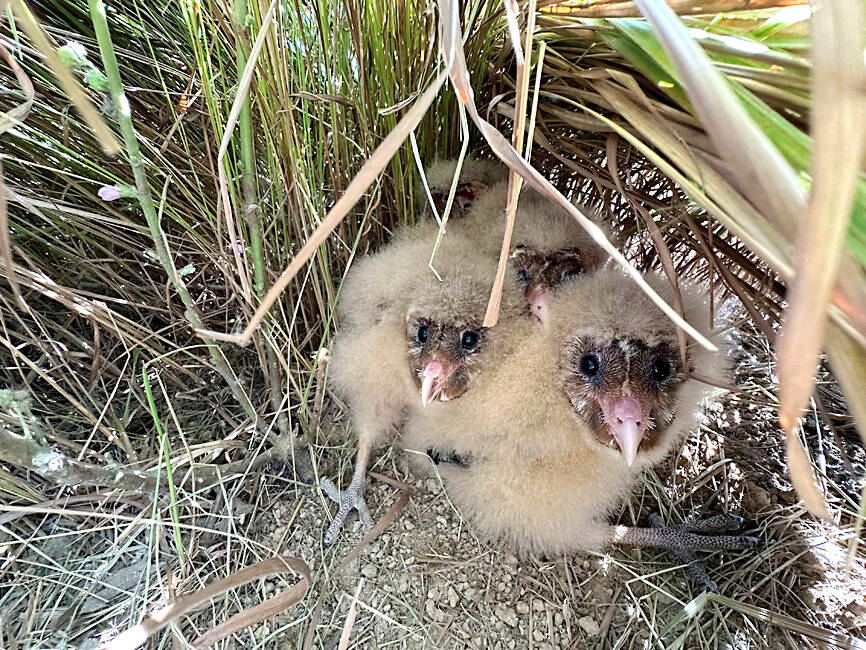By Hollie Younger /
Staff writer, with CNA
Six people were arrested in Tainan for interfering with the breeding patterns of Taiwan’s native and endangered eastern grass owls, the Forestry and Nature Conservation Agency’s Chiayi (嘉義) branch said yesterday.
Five fledglings were rescued and sent for emergency treatment, it said in a statement.
The Chiayi branch, along with the Tainan City Government and the Seventh Division of the Seventh Special Police Corps, on Tuesday seized photography equipment that had been illegally set up in the nests of eastern grass owls in Tainan’s Guiren District (市歸仁區), it said.

Photo courtesy of Tseng Yi-shou
A total of six people, including five photographers and one lookout, were apprehended for contravening the Wildlife Conservation Act (野生動物保育法), for conducting flash photography that interfered with the owls’ nesting habits, the branch said.
Article 16 of the act states that protected wildlife species shall not be disturbed or abused, with punishments of up to one-year imprisonment and fines ranging from NT$60,000 to NT$300,000.
The five rescued fledglings were sent to the Taiwan Biodiversity Research Institute in Nantou’s Jiji Agri-tourism Area (南投集集農業部), it said.
The branch said it had received tip-offs that people had been installing cameras into the nesting areas of the owls to capture valuable images of the birds mating and feeding their young.
The task force conducted seizures at three locations in the area surrounding Guiren District’s Shalun Farm and the wetlands along the Erren River, it said.
Eastern grass owls are an endangered species in Taiwan with their numbers estimated to have dwindled to about 500, and they are the only one of Taiwan’s 12 owl species to nest on the ground, the branch said.
As non-migratory birds, farmland, uncultivated land, grazing pasture, rivers and creeks are all important habitats for the owls, and winter is their peak breeding season, it said.
Eastern grass owls face extinction not only due to ingesting rat poison, becoming caught in nets and the destruction of their habitats, but also because their unique breeding patterns are easily disturbed by human intervention, it added.